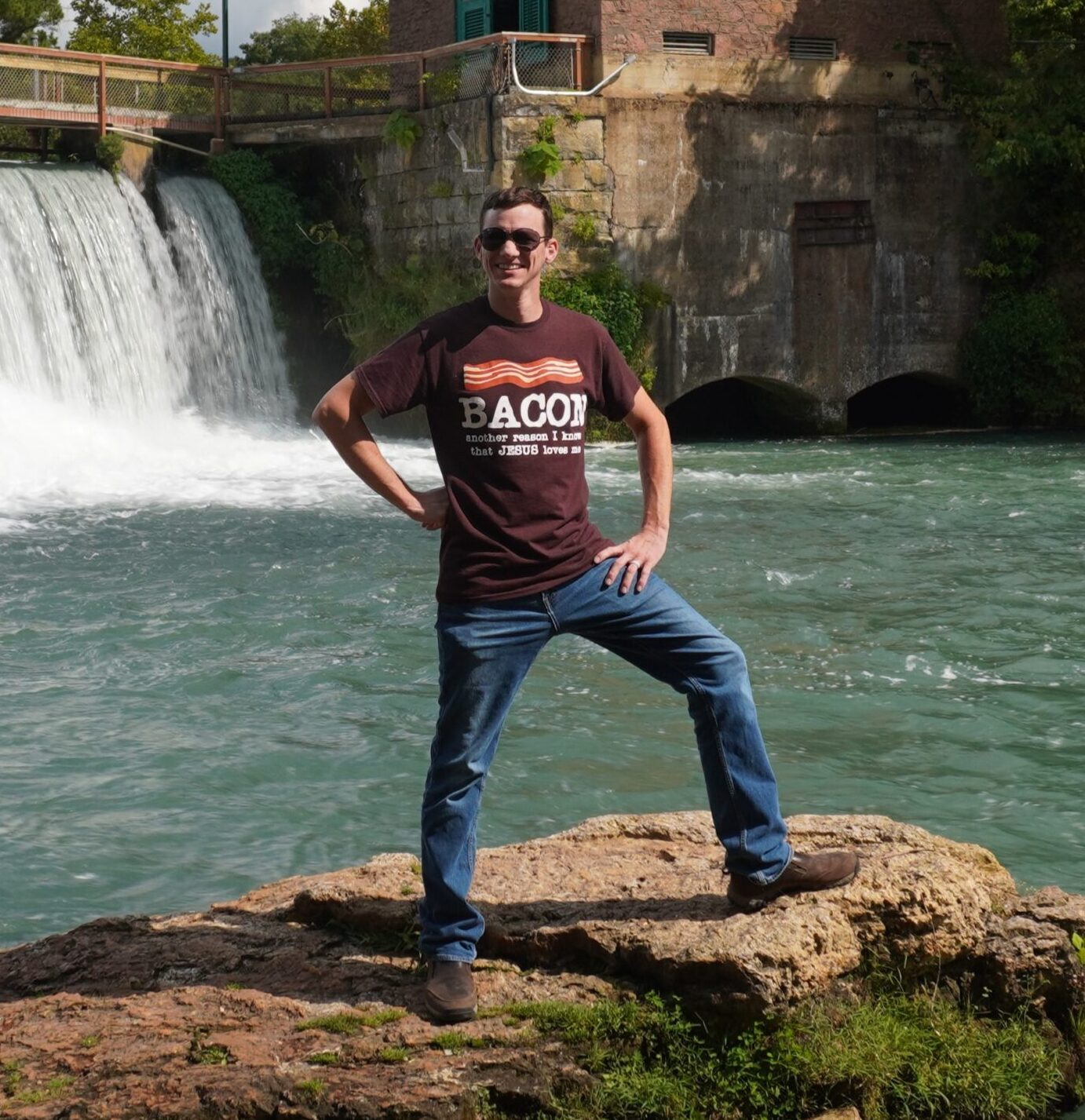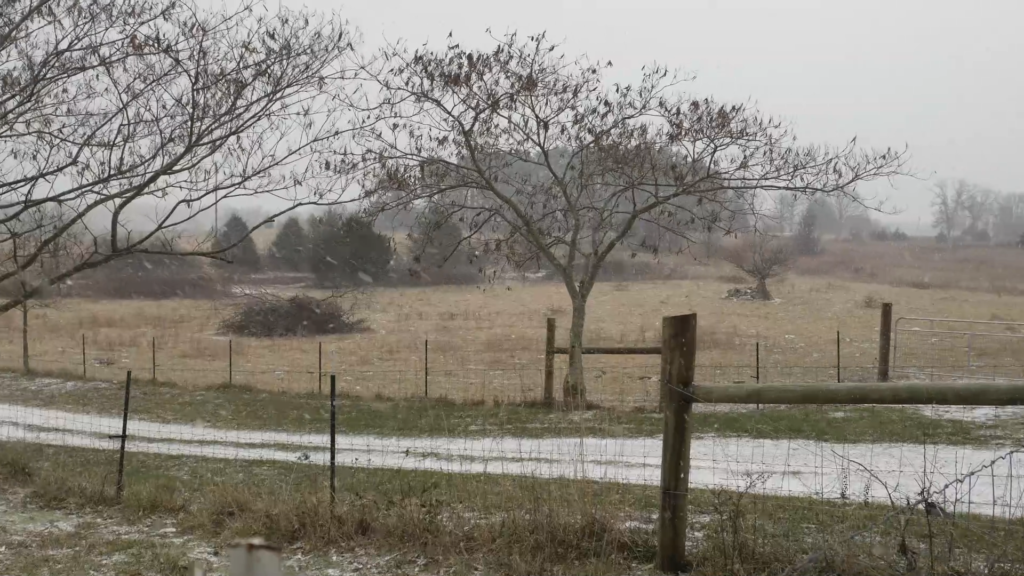
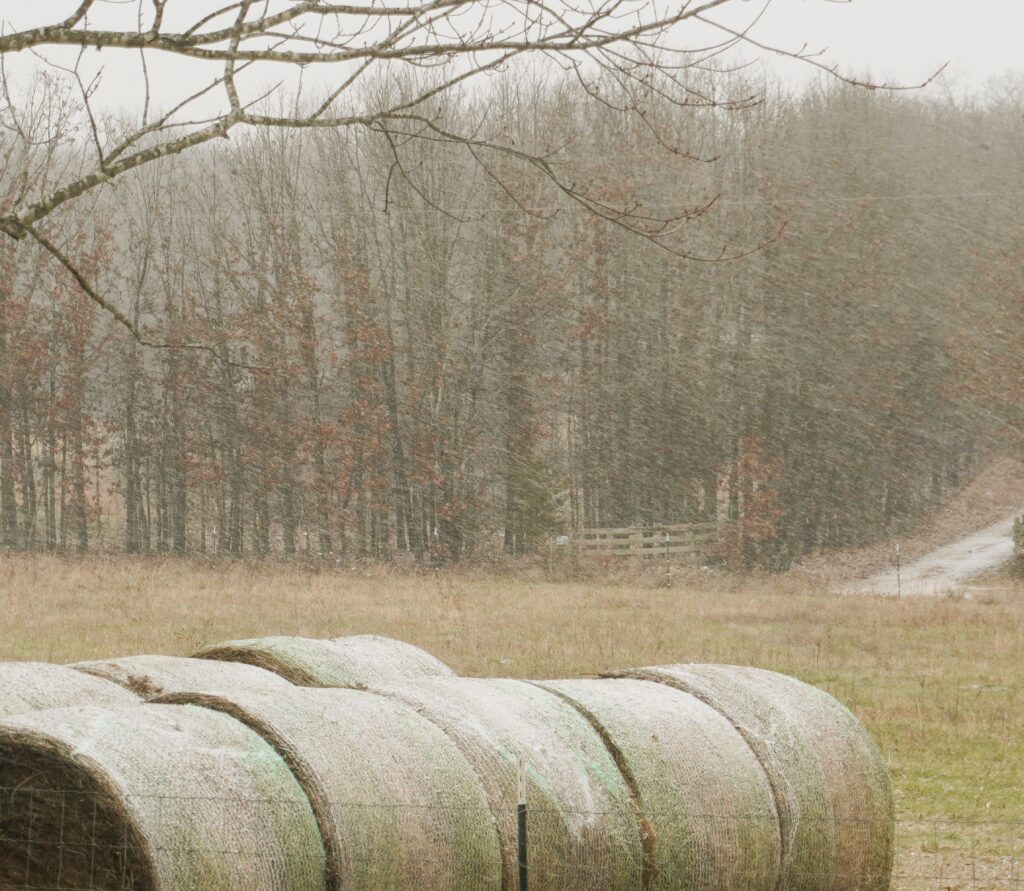
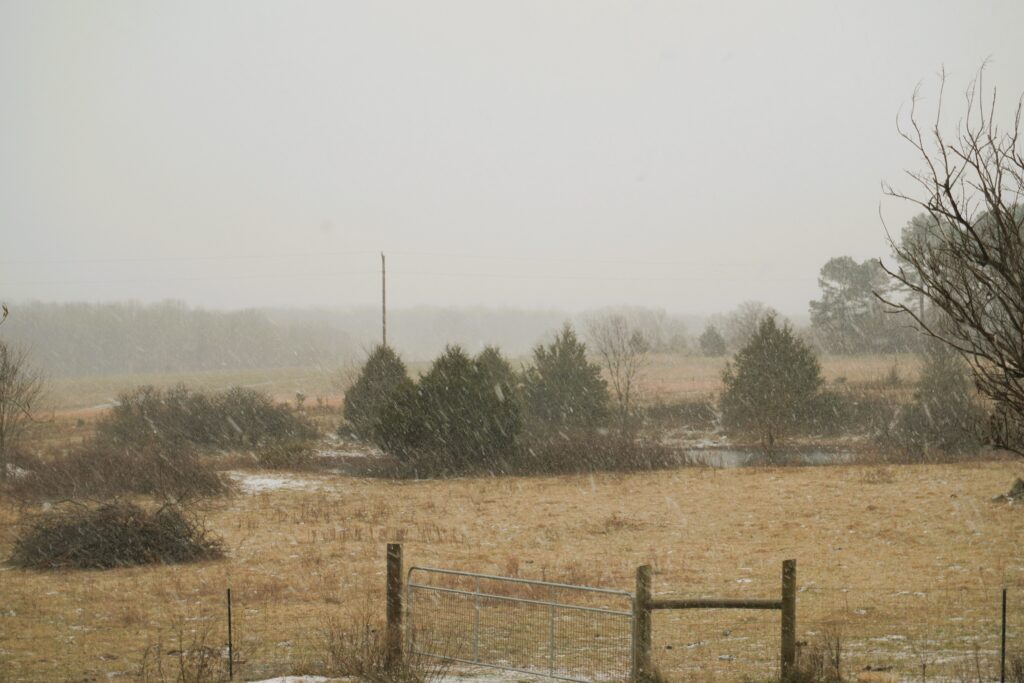
A question that some have that might be new to farming is, “what do my animals need in this kind of weather? Well, the answer is often simpler than some might realize. Farming in a winter storm is not all that different than farming in the other weather conditions we see here in Southern Missouri.
The truth is that these animals are made to be outside.
Farming in a Winter Storm
Our routine for taking care of our animals changes a little with most of our focus being sure they have water and extra food. Which means the chores right before a winter storm will be a little bit more involved than normal.
It can get busy around here with rushing to the store and fighting the masses of people stockpiling their food supply with 2-3 months worth of groceries to get through the next couple days, just kidding…. kind of.
We’re expecting sub-zero temperatures tonight, about 2 or 3 below. Wind chills as low as -20. With it we’re told that we can expect a couple inches of snow.
This means not only will we spend a little extra time getting everything ready for the extreme cold, we will also be checking on the animals regularly to break ice so they’ll have water, and feeding as necessary.
Caring for the cattle and donkeys
In the fall of the year, the cattle will start to put on a thicker winter coat. Even the calves. If the wind picks up, they’ll often try to find a low spot or a stand of trees to protect themselves.
People often think that cattle should be locked up in a barn to protect them from the cold weather when in reality, the opposite is true. There’s nothing wrong with them having access to a barn, but they shouldn’t be locked up inside unless there is good ventilation. A cow’s body produces a lot of water vapor, which can increase the humidity of the air inside a barn. If the air gets too humid, the cattle can begin to experience respiratory problems.
Believe it or not cattle can handle temperatures slightly below zero reasonably well if they have adequate feed, which is probably the most important consideration in cold weather, along with water. When a cow’s rumen is working, it generates heat which keeps the cow warm.
When to worry about shelter during a winter storm
If there’s a possibility of a cow having a calf in this kind of weather, it is important to be prepared because that situation can present some very specific, and potentially deadly challenges. The most important thing would be to get the newborn calf dry so they don’t lose body heat. It’s in this situation that a barn is handy, at least until the calf can get started nursing. You’d want to put the cow in the barn so she doesn’t calve on snow covered ground. Again, this is really just to buy the calf time to get dry and start nursing.
When to feed hay during a winter storm
Even though it’s nearly the end of December, I’m still grazing stockpiled grass and am estimating that I shouldn’t have to feed any hay until around the first of February. Cattle can graze in up to 12 inches of snow. Around here ice is the biggest variable because snow rarely piles up to more than a few inches. If ice builds up to create a kind of crust of top of the grass, I’ll have to feed hay.
In my experience, the cattle would rather graze the stockpiled grass if they can get to it. I’ve always unrolled my hay in the fields and when I’ve given them hay as a supplement to the stockpiled grass in cold weather, they’ve usually eaten very little of it. Instead, they spoil it by using it as bedding. So, what I’m going to do for the cows is just give them a little more grazing space than I normally would.
I use empty lick tubs for water in my regular grazing system. Right now the cows have access to the pond but I’m going to continue using the lick tub because it’s easier to make sure they have fresh water in one of these tubs than it is going out to break ice on the pond. I’m also going to disconnect the automatic waterer and add an extra tub that I’ll fill with a hose. Of course, I’ll have to empty the hose each time I use it so it won’t freeze.
What about the piggies
As for the pigs, their heat retention comes from the layer of fat on their bodies, and by piling on top of one another.
You know, it’s always funny to watch them jockeying for position when they’re piling up. No one wants to be on the top.
One thing I do is try to make sure they have some extra bedding. In this case I’m giving them a bale of hay. That way, they can have a snack without having to get out of bed. Lazy pigs…
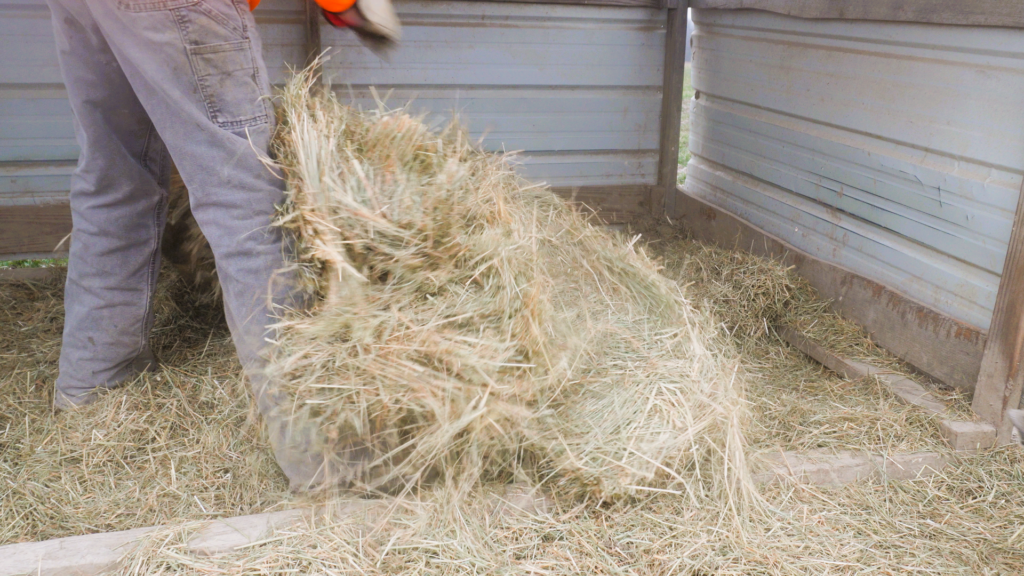
Of course, like the cows, I’ll need to make sure they have plenty of feed and water as well. When the temperatures are only dropping below freezing overnight, I simply try to keep their water barrel full.
It’s a 55 gallon barrel with a few pushbutton drinkers mounted at the bottom. The large volume of water helps to retain the heat of the day and keeps things from freezing up.
In the past, I have put a tank heater in the barrel during really cold weather, like what is on the way. However, in this instance I’m going to have to put in a water bowl and fill it a couple times a day.
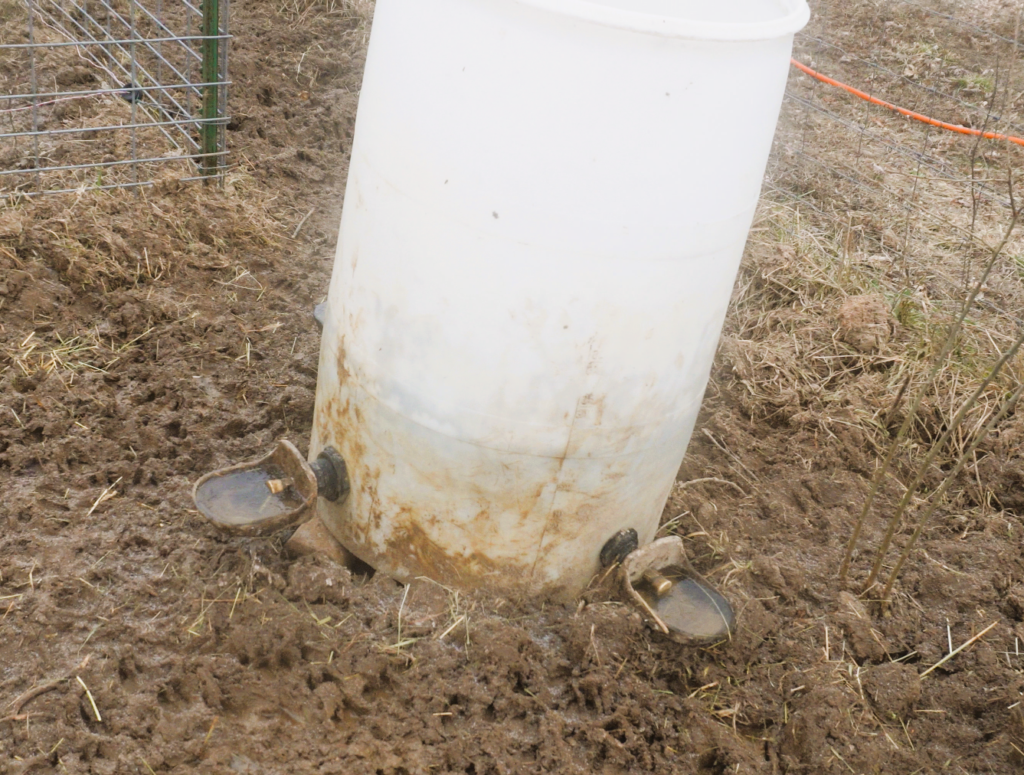
I don’t have easy access to a power source where I have the pigs. That’s one of the things I’m going to have to work on as we get things going here. On our old place, we had an old barn with power.
You don’t realize how valuable something is until you don’t have it anymore. Learning to use what you have and be adaptable is what farming is really all about.
Thanks for reading!
